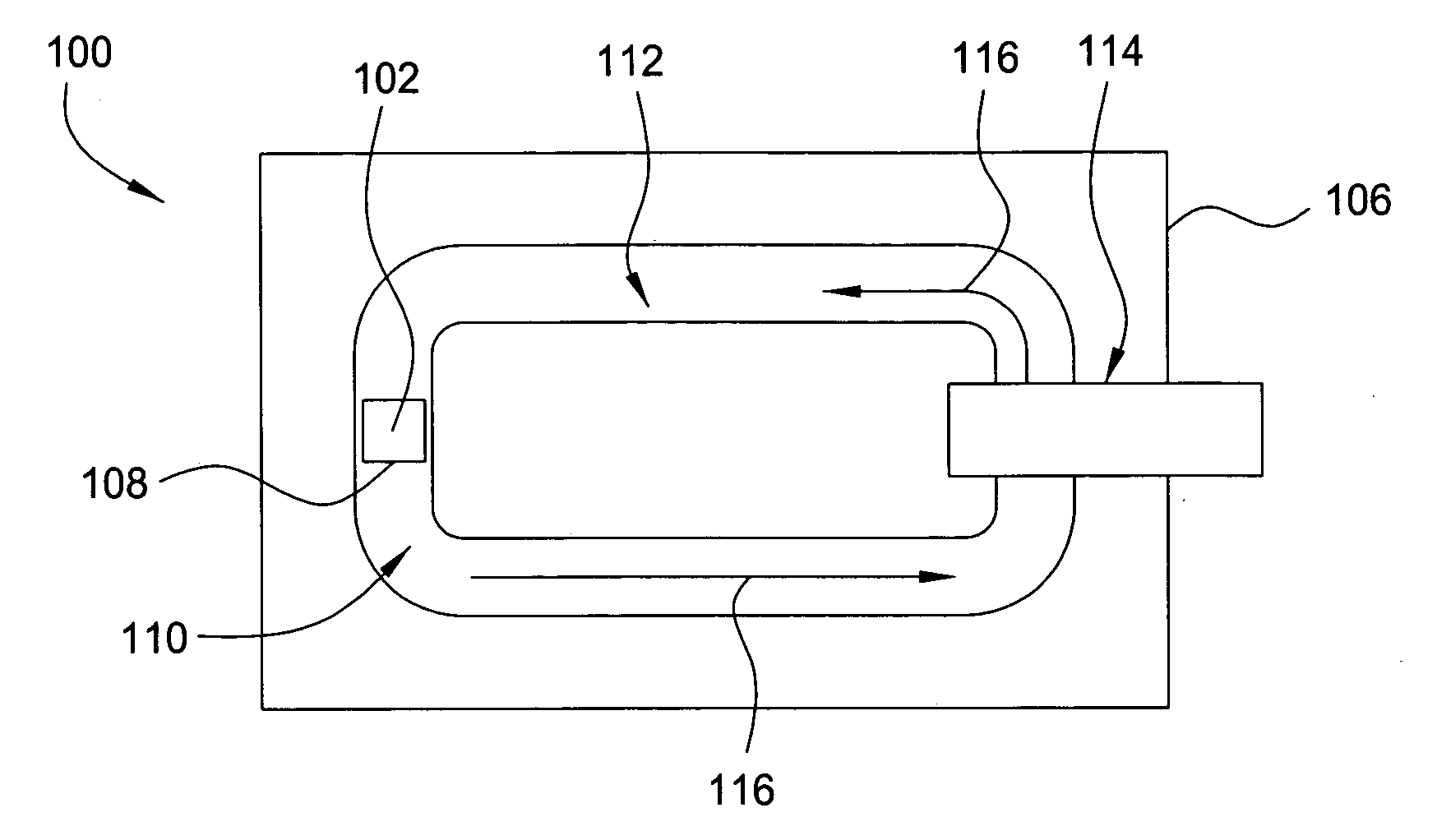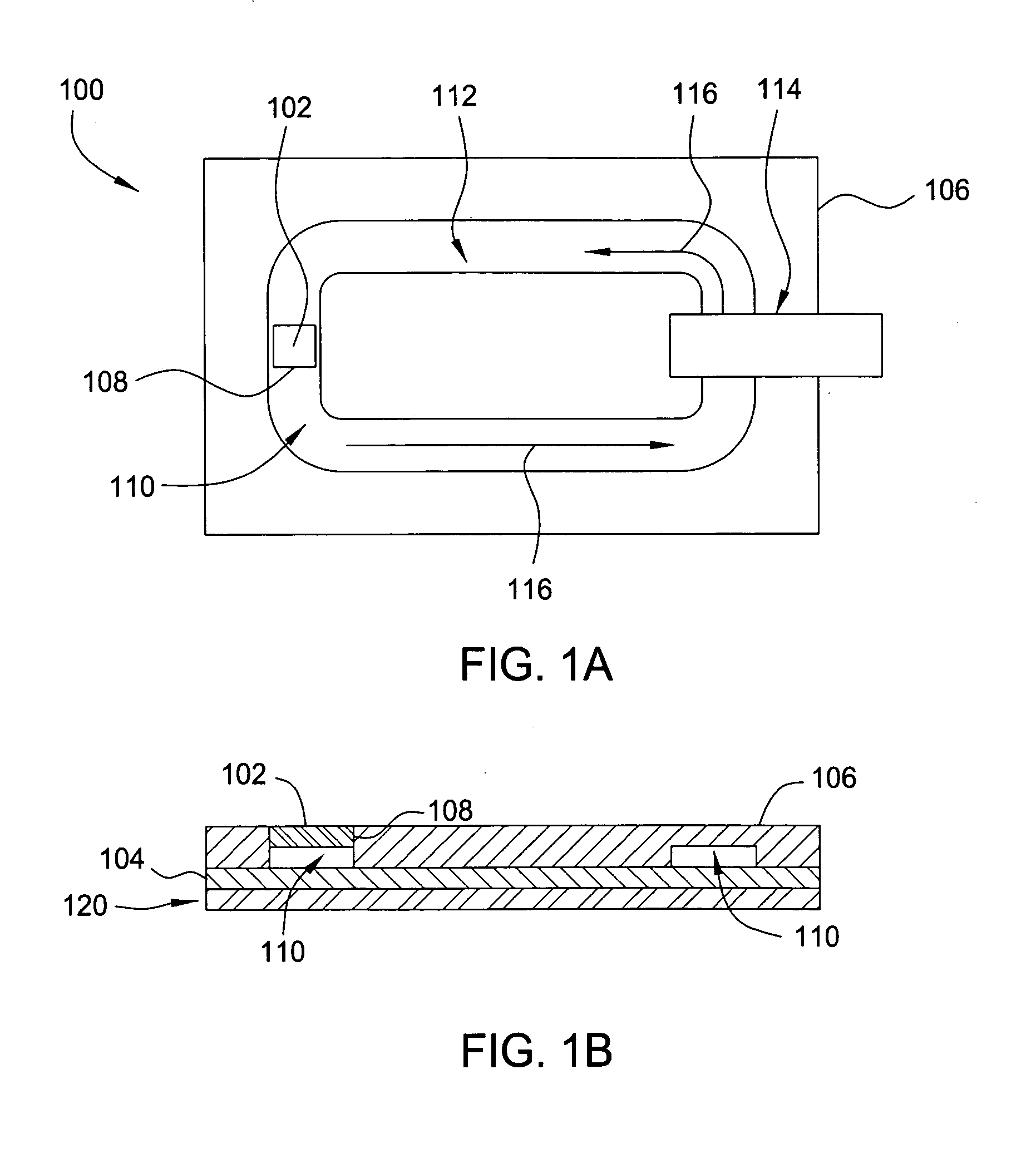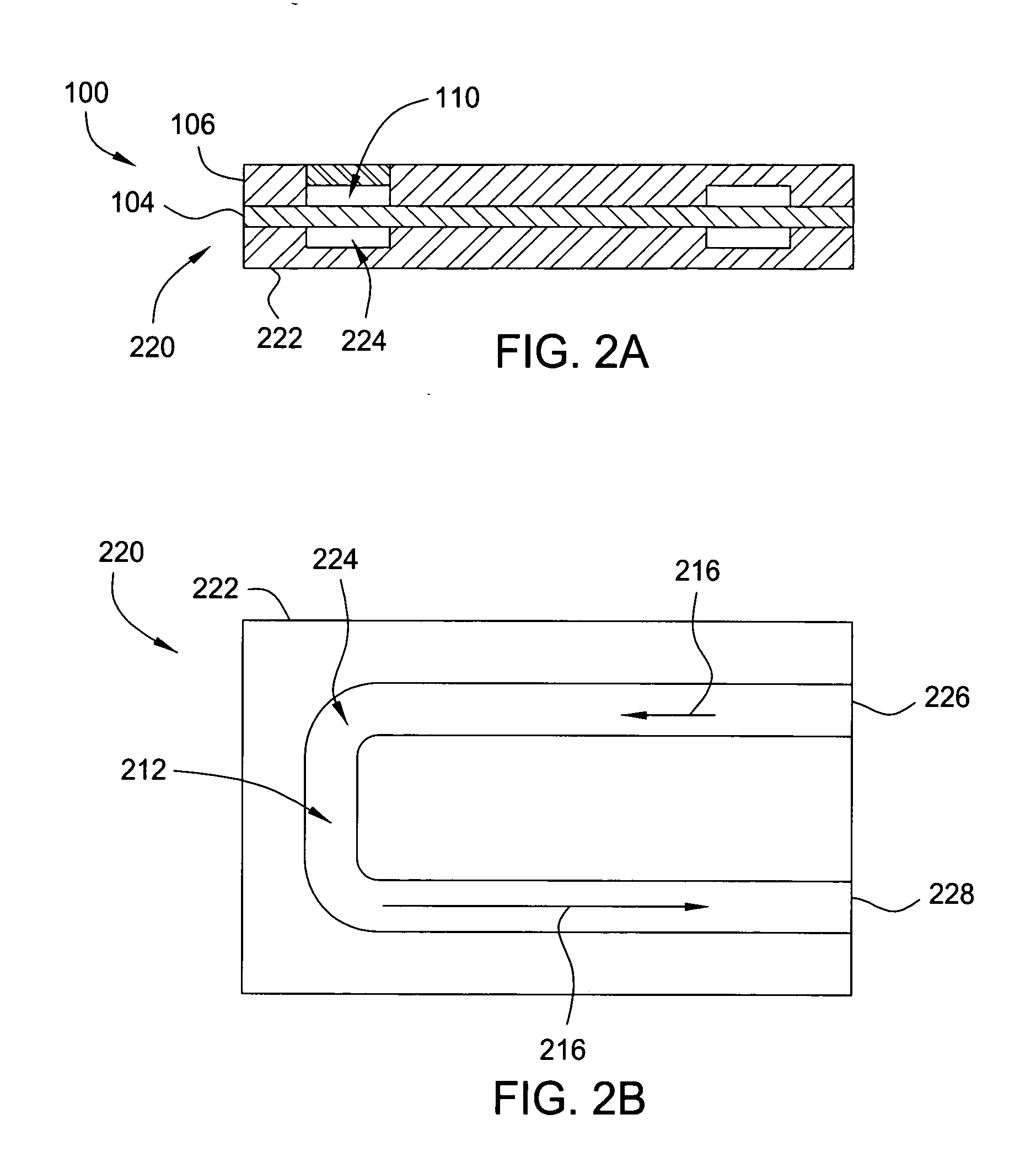Active liquid metal thermal spreader
a liquid metal thermal spreader and active technology, applied in the field of semiconductor devices, can solve the problems of increasing heat, increasing the reliance on conventional air-cooled methods, and reaching the limits of current forced air cooling methods,
- Summary
- Abstract
- Description
- Claims
- Application Information
AI Technical Summary
Benefits of technology
Problems solved by technology
Method used
Image
Examples
Embodiment Construction
[0016]FIGS. 1A and 1B respectively depict top and side views of one embodiment of a thermal spreader 100. The thermal spreader 100 includes a substrate 106 coupled to a heat sink 104 and having a fluid flow channel 110 defined therebetween for circulating a coolant 112. The substrate 106 may comprise a thermally conductive or non-conductive material, such as metal, plastic or ceramic. In one embodiment, the substrate 106 is plastic or ceramic.
[0017] The heat sink 104 is a thermally conductive material, such as a metal, disposed beneath the substrate 106. The heat sink 104 and the substrate 106 may be coupled together by adhesive or by mechanical joining, such as by screwing, bolting, clamping, and the like, in a manner suitable to prevent leakage of the coolant 112 from the channel 110. Optionally, a gasket (not shown) may be interposed between the substrate 106 and the heat sink 104. In one embodiment, the heat sink 104 comprises copper or aluminum.
[0018] Optionally, a coating (n...
PUM
 Login to View More
Login to View More Abstract
Description
Claims
Application Information
 Login to View More
Login to View More - R&D
- Intellectual Property
- Life Sciences
- Materials
- Tech Scout
- Unparalleled Data Quality
- Higher Quality Content
- 60% Fewer Hallucinations
Browse by: Latest US Patents, China's latest patents, Technical Efficacy Thesaurus, Application Domain, Technology Topic, Popular Technical Reports.
© 2025 PatSnap. All rights reserved.Legal|Privacy policy|Modern Slavery Act Transparency Statement|Sitemap|About US| Contact US: help@patsnap.com



